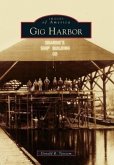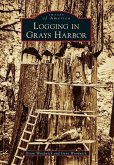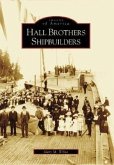Oak Harbor, the largest town on Whidbey Island, was first inhabited by a large population of natives. White men first arrived to the island in 1792 on Capt. George Vancouver's ship. Joseph Whidbey is credited with finding the churning passage, which he named Deception Pass, establishing that the land was indeed an island. Vancouver named the land Whidbey's Island. Three young adventurers in search of new and free land--Martin Taftzon, Charles Sumner, and Ulrich Freund--were brought up the bay to Big Springs by native canoe. Taftzon scrambled up over the hill and, gazing out to his eye's delight on the beautiful harbor, exclaimed loudly, "Eureka, I have discovered Paradise!" On January 4, 1851, these young men filed donation land claims around the harbor. Oak Harbor was named by Dr. R.H. Lansdale.








